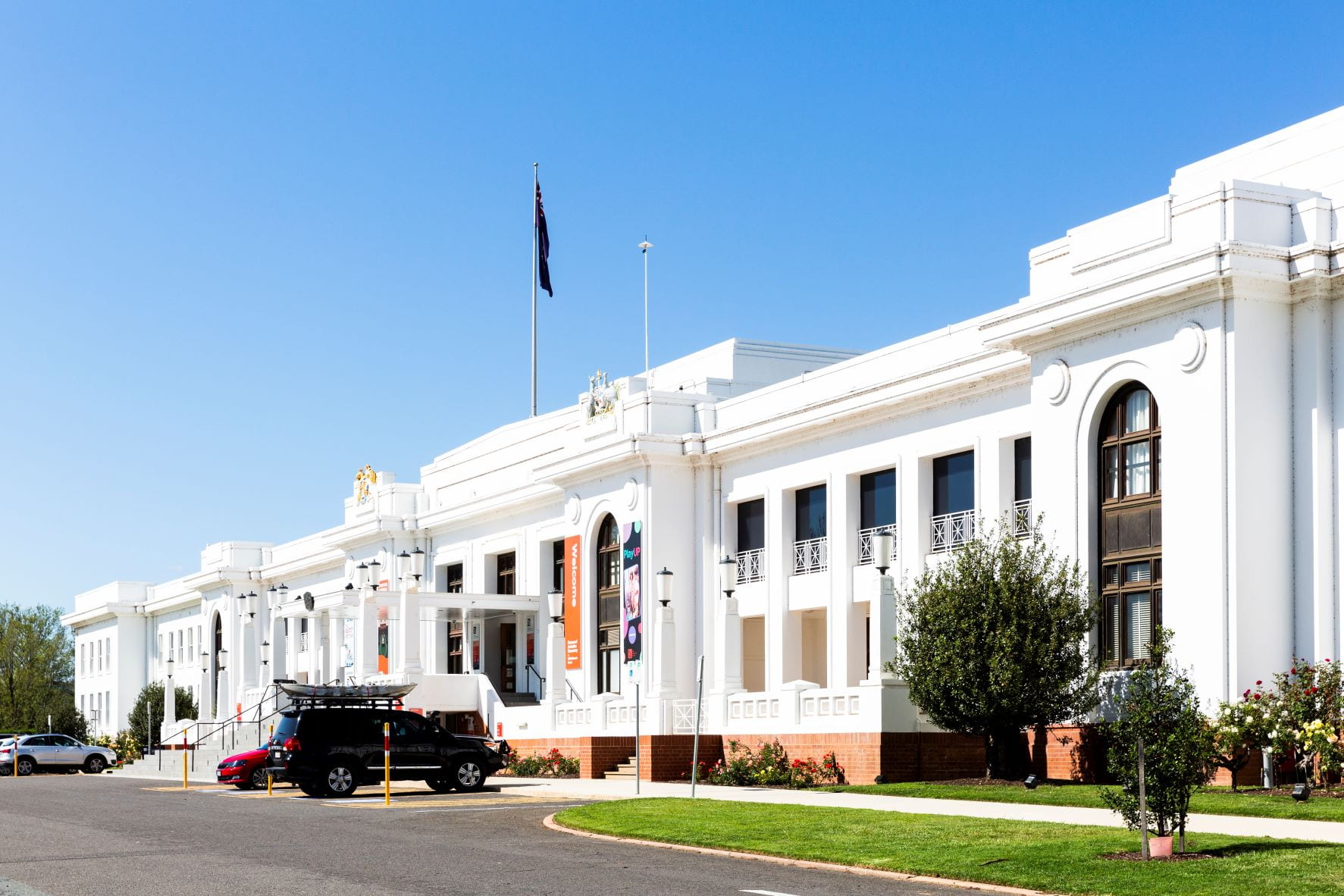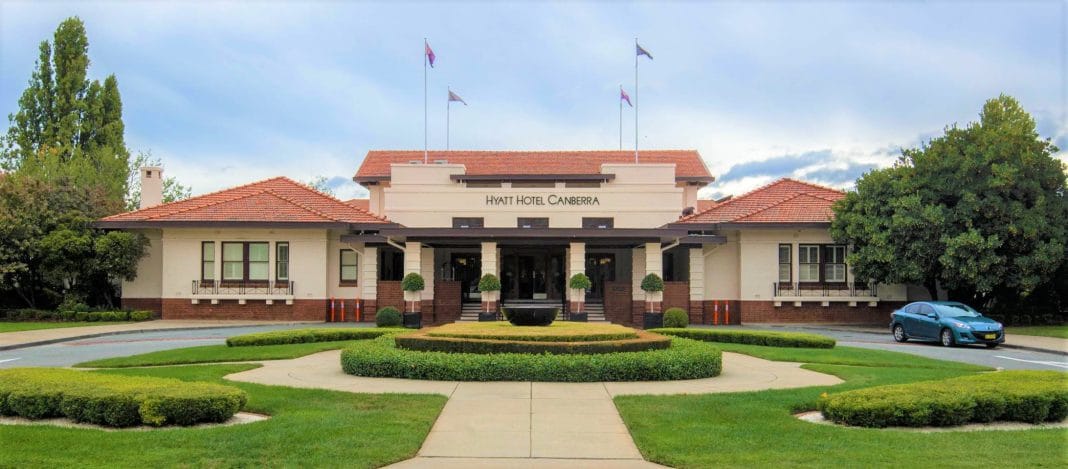Canberra’s architecture tells the intricate story of the ‘ideal city’, encompassing an array of mid-century modernism paralleled with sprawling Brutalist architectural designs that, combined, create our national capital.
From the international competition to design the city in the 1910s, through to the late 1990s digital era, Canberra’s architectural history is rich in culture and classical style.
Expert on Canberran architecture, and author of Australian Architecture: A History, Dr Davina Jackson, is a journalist by trade, originally from New Zealand.
After marrying into a family with four generations of architects, there was no possible way she could ignore the history of Australian architecture, which ultimately began her over three-decade long journey of discovering her passion for urban geography and building design.
Dr Davina Jackson regards Canberra as one of the world’s greatest cities, especially for its density of Brutalist monuments – a fashionable style of buildings born in the 1960s, after the psychological disturbances of World War II, and known as the ‘anti-beauty movement’.
Many of the raw, concrete buildings that were constructed in Brutalist style are no longer standing in Canberra, and are continuing to be demolished, but are nevertheless responsible for placing the capital on the map as a significantly cultural city.
“When I think of Canberra, I think of the great institutional buildings along the waterfront like the National Gallery and the National Library – both marvellous examples of modernism,” Dr Davina Jackson said.
“Another example is obviously Parliament House, and I actually received a briefing of the concept from the architect while it was being built – it’s got such a thorough design with an extraordinary range of complicated strategies that are impressive on an international scale.”
Canberra’s architectural history begins with knowledge of the Ngunnawal and Ngambri Peoples, who lived in the ACT region before the arrival of early European settlers.
Unfortunately, little has been documented about Aboriginal traditional structures in Canberra before the late 1800s. However, it is known that a range of different structures existed and how an Aboriginal tribe built their homes depended on what country they lived on.
“There’s reports by Charles Sturt in the mid-1800s, but before that there is very little to practically no illustrations of what Aboriginal structures were built, so we’re not quite sure what was done back during the dreamtime,” Dr Davina Jackson said.
After colonisers arrived in Australia and Federation was established in 1901, it was decided that Australia’s capital would be Canberra, yet the first European concepts for the city were still simply figments of imagination.

One of the pioneers of Canberra was Charles Coulter, an Australian architect and artist who was one of the ‘ideas men’ within the early designs of our nation’s capital and who solidified Canberra’s nickname as the ‘ideal city’.
One of his most popular and arguably fabulous designs was for European Italian classical style stone structures to surround a lake, and the design was intended to make Canberra a perfect polis.
It would transcend the city away from “England’s stinky, smoky, septic cities that were blighted by coal industries” [page 152], and consolidate Australia as an impressive, new sovereign nation rather than a single colony of the United Kingdom.
“Then there was the international competition that was published in 1911 and won by American couple Marion Mahony Griffin and Walter Burley Griffin in 1912. They came to Australia in 1914 to start development on the city according to their plan, and it was rather similar to what Canberra is today in terms of street design,” Dr Davina Jackson said.
“Around the same time, a lot of local architects, like John Woolman, set up a town planning association and started competing with the Griffins to try and change things they didn’t like about the plan.”
Construction of Canberra finally began in 1920, and two of the first buildings to see the light of day were the Hotel Canberra and the Hotel Kurrajong, along with [Old] Parliament House.
They were all designed by the Commonwealth Chief Architect, John Smith Murdoch, who used the Chicago-German Stripped Classical style for [Old] Parliament House and designed the hotels to be garden pavilions connected by corridors and arranged around grass courts.
The two hotels were originally designed to house public servants, politicians, and construction workers who were all working in Canberra, before the clusters of bungalows, cottages, and cabins were built.
“Conservatives would stay in the Hotel Canberra and Labor workers would stay in the Hotel Kurrajong. Before they were built, the builders lived in tent camps around the construction sites,” Dr Davina Jackson said.
“[Old] Parliament House was designed in the American style of having a low, one-storey building sprawling across the land, rather than big, boxy buildings, and a low-pitched roof rather than a high roof, which was the fashion of the late 1800s.
“That was John Smith Murdoch’s style, and he had been to Chicago and met Frank Lloyd Wright, who employed both the Griffins in the early 20th century, and by the 1920s he had a real understanding of the Chicago style, which was emulated in his architecture.”
In the 1930s, the first war memorials were being built to honour the fallen from World War I, which was surprisingly significant to Canberra’s architecture.
Canberra was originally designed to be a ‘garden city’, which was a trend in America and Britain at the time, meaning it was a ‘peaceful city’.
But, as it did with almost everything, the war changed this concept, and Canberra was to no longer be a city all about peace.
At this time, the Commonwealth Government was hiring impressive architects, who were considered the best of the decade, to interpret contemporary trends and approaches to design.
Major university building designs from the US and Canada were brought back to Australia to inspire the builds of ANU and the University of Canberra, along with the National Gallery of Australia designed by Colin Madigan.
“After World War II, Canberra’s architecture really took off. In the 1950s and 1960s, many of its greatest monuments were built, particularly education facilities including the great Shine Dome [headquarters of the Australian Academy of Science] at ANU,” Dr Davina Jackson said.
“The 1960s and early 1970s were also the known as the ‘space age’, which is when the infamous Futuro at ANU came to life. This was because technology had advanced to allow curved buildings, and people were interested in designing buildings like spaceships, due to the mania over the US versus Russia space race that was happening at the time.”
In 1965, the Canberra Theatre was built by Yuncken Freeman and is a significant cultural building, as it proved Canberra was maturing as a city.

It was an architecturally fashionable building for its time, and its construction showed to the rest of the country that Canberra was no longer just government buildings and war memorials – there were enough people living in the city for there to be interest in the performing arts.
The 1980s saw the construction of the great, historic building of [New] Parliament House and the High Court of Australia, designed by Chris Kringas, followed in the 1990s by phenomenal computers that could produce buildings with non-rectangular and non-standard forms.
This is the reason behind many of Canberran universities’ unusual and brightly coloured faculty buildings with interesting forms.
The ‘digital era’ has lasted in Canberra all through the 1990 right up to the present.
“Grand avenues, both straight and curved, the Telstra Tower, institutional buildings structured in classic, gorgeous modernism … Canberra’s whole plan is very important in terms of international town plans, and in my opinion, it’s the greatest town plan of the 20th century,” Dr Davina Jackson said.
Canberra Daily would love to hear from you about a story idea in the Canberra and surrounding region. Click here to submit a news tip.



